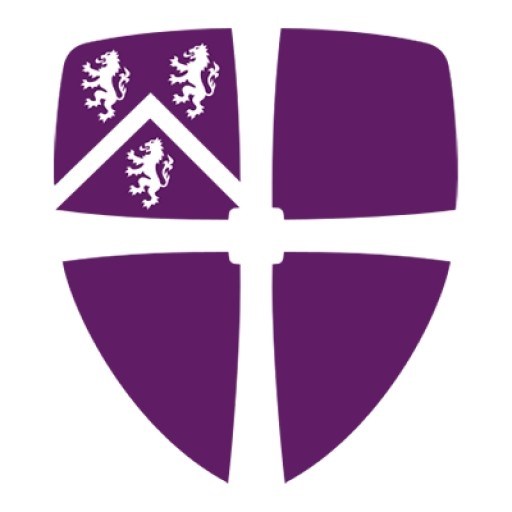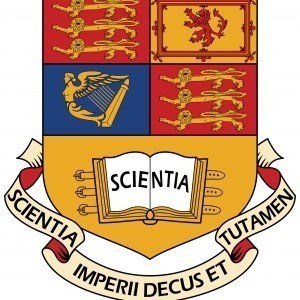Photos of university / #durhamuniversity
The Bachelor's degree in Visual Arts and Culture at Durham University offers students a comprehensive and dynamic exploration of visual arts, their historical development, cultural significance, and contemporary practices. This interdisciplinary programme is designed to foster critical thinking, creative skills, and a deep understanding of the role of visual culture within society. Throughout the course, students engage with a diverse range of topics, including art history, visual theory, contemporary art practices, and cultural studies, enabling them to analyze and interpret visual phenomena across different periods and contexts.
The programme encourages active engagement with both traditional and modern artistic forms, offering opportunities for practical skills development in areas such as painting, sculpture, digital media, and installation art. Students benefit from Durham’s rich university resources, including dedicated art studios, galleries, and libraries housing extensive collections relevant to visual arts and culture. The curriculum combines lectures, seminars, workshops, and independent research, allowing students to tailor their studies to specific interests within this broad field.
A key component of the degree is the critical examination of visual culture’s impact on identity, politics, and societal change. Students learn to contextualize artworks within their historical and cultural settings, fostering a nuanced understanding of the interconnectedness of art and social issues. The programme also emphasizes professional skills, preparing graduates for careers in arts management, curation, education, or further academic research.
Throughout their studies, students have opportunities for collaborative projects, placements, and exhibitions, enhancing their practical experience and industry connections. The coursework culminates in a dissertation or major project that demonstrates their ability to undertake independent research and produce innovative visual arts or cultural analysis. By the end of the programme, graduates are equipped with a broad set of skills and knowledge, ready to contribute thoughtfully and creatively to the arts sector or continue their academic pursuits with postgraduate study.
Content
The course consists of one core module, two optional modules and a dissertation. The core module sets out the intellectual framework for the programme, offering a broad overview of key conceptual debates in the field of Visual Culture, together with training in analysis of visual objects of different kinds, an advanced introduction to understanding museum practice, and key research skills in visual arts and culture. The optional modules provide further specialised areas of study in related topics of interest to individual students, and the 12,000-15,000 word dissertation involves detailed study of a particular aspect of a topic related to the broad area of visual culture.
Optional modules
Previously, optional modules have included:
- Critical Curatorship
- History, Knowledge and Visual Culture
- Representing Otherness
- Negotiating the Human
- Theorizing History and Historicising Theory: An Introduction to Photographic Studies
- Digital Imaging
- Cultural Heritage, Communities and Identities
- Current Issues in Aesthetics and Theory of Art
- Ethics of Cultural Heritage
- Monumental architecture of the Roman Empire in the Antonine and Severan periods
- Art in Ecological Perspective
- Texts and Cultures I: Visual and Verbal Cultures (Early Modern)
- Energy, Society and Energy Practices
- German Reading Skills for Research
- French Reading Skills for Research
The Centre for Visual Arts and Culture (CVAC) brings together scholars from across and beyond Durham University in order to provide a dynamic setting for wide-ranging interdisciplinary research and debates about visual culture, a field that entails the study of vision and perception, the analysis of the social significance of images and ways of seeing, and the attentive interpretation of a range of visual objects, from artworks to scientific images.
Centre for Visual Arts and Culture
The Centre brings together scholars from across and beyond Durham University in order to provide a vibrant and dynamic setting for wide-ranging interdisciplinary research and debates about visual culture. The Centre provides a focus for cutting-edge research on visual arts and cultures: it aspires to train new generations of scholars through innovative postgraduate programmes, it fosters informed debate both nationally and internationally, and it offers an engaging, open environment for researchers at all levels.
CVAC takes a generous view of what constitutes visual culture and it is broad in both geographical and chronological scope, encouraging debate about the range of approaches, methods and theories that are most generative for research on visual phenomena. Durham’s current visual culture research includes the study of word and image, art and religion, medicine and visual representation, film, the history of photography, architecture, urban culture, heritage and philosophical aesthetics. It also includes the development of pioneering visual research methods and the study of vision.
Durham’s location itself provides a rich and inspiring environment for this field of research. It is part of the UNESCO World Heritage Site that also includes Durham Cathedral; its acclaimed Oriental Museum is a significant asset which houses three Designated Collections, recognised by the Arts Council as nationally and internationally pre-eminent; alongside an outstanding collection of twentieth-century and contemporary art. CVAC has many established relationships with major national and international cultural organisations, and aims to develop further its links with museums, galleries and heritage sites.
Subject requirements, level and grade
- Students will normally be required to have an Honours Degree, usually at 2:1 level or higher or GPA average of 3.2 from a recognised national or international university in an arts, humanities or social science subject. The course assumes no prior knowledge of visual arts and culture, but previous interest or experience of visual culture would be an advantage.
- Two positive academic or equivalent professional references.
- Relevant professional practice in a field of visual arts and culture to be evaluated on an individual basis, may be considered in lieu of formal academic qualifications in some cases.
Preferred Tests:
a. IELTS: 6.5 (no component under 6.0)
b. TOEFL iBT (internet based test): 92 (no component under 23)
c. Cambridge Proficiency (CPE): Grade C
d. Cambridge Advanced (CAE): Grade A
e. Cambridge IGCSE First Language English at Grade C or above [not normally acceptable for students who require a Tier 4 student visa]
f. Cambridge IGCSE English as a Second Language at Grade B or above [not normally acceptable for students who require a Tier 4 student visa]
g. GCSE English Language at grade C or above
h. Pearson Test of English (overall score 62 (with no score less than 56 in each component))
Alternative accepted tests when those listed in a.-h. above are unavailable to the applicant (if the applicant requires a Tier 4 visa to study, advice on the suitability of these alternatives must be sought from the Student Recruitment and Admissions Office):
i. Certificate of Attainment (Edexcel)
j. GCE A-levels (AQA, CIE, Edexcel, CCEA, OCR, WJEC) at grade C or above in an essay based, humanities or social science subject from the following list: History, Philosophy, Government and Politics, English Language, English Literature, Geography, Religious Studies, Economics, Business Studies, Law and Sociology. Modern or Classical Languages are not acceptable in meeting this requirement.
k. International Baccalaureate with a minimum of grade 5 in Standard Level English or a minimum of grade 5 if taken at Higher Level.
l. NEAB (JMB) Test in English (Overseas)
m. Singapore Integrated Programme (SIPCAL) at grade C or above in an essay based, humanities or social science subject from the following list: History, Philosophy, Government and Politics, English Language, English Literature, Geography, Religious Studies, Economics, Business Studies, Law and Sociology. Modern or Classical Languages are not acceptable in meeting this requirement.
n. Singapore Polytechnic Diploma and Advanced Diplomas at GPA 3.0 or above
o. WAEC and NECO Grade B3 or above from Nigeria and Ghana
The Financing of the Visual Arts and Culture program at Durham University is designed to provide students with comprehensive understanding of the financial aspects involved in managing, sustaining, and promoting arts and cultural organizations. The program covers a wide range of topics including funding sources, grant writing, budgeting, financial management, and sponsorship strategies, equipping graduates with the skills necessary to navigate the complex financial landscape of the arts sector. Tuition fees for domestic students are structured annually and are subject to updates; as of the latest academic year, they are approximately £9,250 per year. International students typically pay higher fees, reflecting the global nature of the program, with costs around £25,000 per year. Additional costs may include enrollment fees, registration fees, and costs associated with participation in field trips, workshops, or internships, which are integral to gaining practical experience. Funding opportunities are available through a combination of university scholarships, government grants, and external funding bodies dedicated to arts and cultural initiatives. Scholarships specific to the program are offered based on academic merit, financial need, and project proposals, which can significantly reduce the financial burden. Students are also encouraged to seek external sponsorships and internship stipends to support their studies and research projects. The university's Financial Aid Office provides guidance on applying for bursaries and external funding, as well as advice on budgeting and financial planning to manage educational expenses effectively. Furthermore, the program emphasizes developing knowledge of the economic implications of arts management, including revenue generation, audience development, and the financial sustainability of cultural projects. Graduates of the program often pursue careers in arts administration, cultural management, fundraising, and policy development, where their financial expertise becomes a key asset. Overall, the Financing of the Visual Arts and Culture program aims to prepare students not only academically but also financially, enabling them to lead sustainable and impactful careers in the arts sector.
Visual Arts and Culture at Durham University offers students an in-depth exploration of the rich intersections between visual arts, cultural history, and contemporary artistic practices. The programme is designed to develop critical thinking, aesthetic appreciation, and practical skills through a multidisciplinary curriculum. Students engage with a variety of topics, including history of art, contemporary art theory, visual culture analysis, and museums and exhibitions. The course emphasizes both theoretical understanding and practical application, with opportunities for studio work, curatorial practice, and digital media projects. The programme aims to foster innovative perspectives on visual arts within their cultural contexts, preparing graduates for careers in the arts sector, academia, or related fields. Students benefit from access to Durham’s extensive collections, galleries, and partnerships with local cultural institutions. The faculty includes experts with diverse specializations, offering mentorship and guidance tailored to individual interests. Payment options, duration, and admission requirements align with Durham’s standard undergraduate offerings. The programme often incorporates field trips, guest lectures, and collaborative projects, enriching the learning environment. Graduates typically pursue further study, arts administration, curation, gallery management, or creative industries. The curriculum balances historical knowledge with contemporary practice, ensuring students develop a comprehensive understanding of visual arts and their cultural significance.

